
Music knows no boundaries. It is an art which expresses itself in the form of a rhythm, a sound and a joyful melody. Touched by the heart and played by the hand, Banjo is one such instrument, which finds its roots in the African countries. Happy, joyous and exciting is the sound of the Banjo. It is considered as a primary contribution from Africa, was made popular in America and occupies a central place in the African–American traditional music. Once widely used in minstrel shows, today Banjo is the mainstay of the old time American music. Banjo is an instrument used to create fast and happy music. It belongs to the family of stringed instruments. It has a long neck and a circular drum–like body overlaid with a parchment and the strings are plucked with the fingers or a plectrum to create music. Let us learn more about this instrument.
Banjo is considered to have its origin in Africa and the Middle East. The African used animal skin, a gourd and the neck fastened with some strings to make an instrument to create music. The native Africans were taken overseas as part of the slave trade. The enslaved Africans created Banjo–like instruments in their free time. The design of this was based upon an instrument indigenous to Africa. There are mentions of African slaves working in plantations and sometimes playing music with an instrument. Later on, the ‘banjar’ as it was called, became a popular form of musical instrument. The earlier handmade instruments made way for the machine–made ones. The term ‘Banjo’ may have been derived from banjar, banjil, bangoe, bangie or banza as it was called during that time.
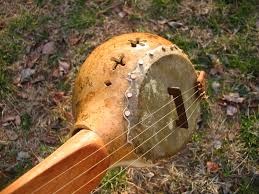
The unique body of the Banjo gives a sound to it. The strings pass over a bridge on the top of the drum head. When the strings are plucked, they transmit vibrations directly into the drum head, which amplifies the notes giving them a bright sound. The vibration from the drum echoes in the resonator and this in turn, builds up the strength of the notes. Bluegrass Banjos have a resonator in addition to the skin which makes it sound louder than the other Banjos.
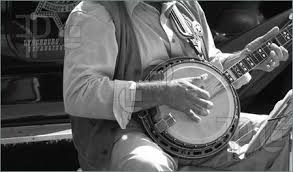
The components or parts of a standard Banjo are brackets, head, arm–rest, bridge tailpiece, tone ring, pot, resonator flange, resonator and heel.
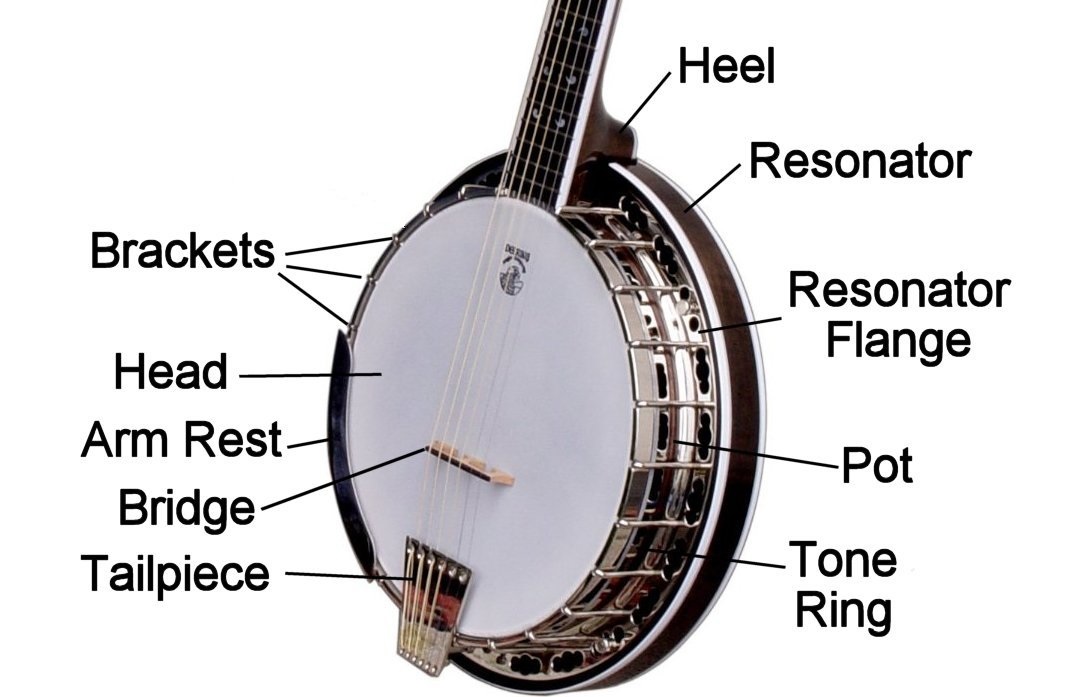
Earliest Banjos were made from gourd (pumpkin) with many strings attached to it. The modern version of the instrument includes the body made from animal skin (rare) or wood of mahogany. On a wooden hoop, the skin or parchment is stretched leaving an open back. The skin is tensioned with nails and tacks. Banjos have long, narrow, fretted neck with five strings made from the horse hair. The requirement for a durable performance gave rise to specially crafted Banjos with an extra string made from metal wires. Industrialization led to factory–made Banjos which are now very stable fretted (metal strips) instruments with mechanism for ‘tensioning’ the head. Apart from adding synthetic heads and tuners, most of the latest Banjos are open– back and 5–stringed instruments, similar to the ones made earlier.
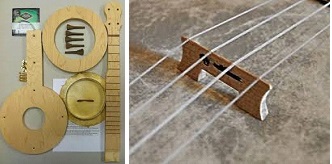
Banjo is widely played in an Irish music, traditional music, Jazz ensemble, folk, country and bluegrass. It was earlier associated with minstrel shows. Minstrel shows are performed by white Americans, where they described the lifestyle of the African or black American population in a comic style. Hence, there is a wide use of Banjo, particularly in the African–American traditional music.
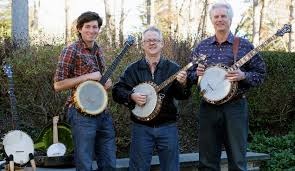
Different types of Banjo include:
- Open back Banjo: It is a quieter and lighter instrument meant for beginners.
- Resonator Banjo: It is a heavier and an expensive version of Banjo with a loud and full sound.
- Four–stringed or tenor Banjo: This is associated with Jazz or Irish music and is a simple instrument.
- Five–stringed Banjo: It is the best traditional blue grass instrument with range and availability of notes.
- Six–string Banjo: It combines the body of Banjo with the neck of a guitar and is played by experienced players.
The basic difference in all these types is in the number of strings and the use of basic materials such as wood, metals, small microphones, metal wire strings and electronics instruments.
An earliest Banjo player was Vess Ossman who started at the age of 12 and was the first recording artist of the instrument. Notable Banjo players include Uncle Dave Macon and Jerry Garcia, Clifford Essex, Earl Scruggs and Bela Fleck. Top bands such as the Infamous String dusters, Trampled by Turtles, Greensky Bluegrass, Avett Brothers and Town Mountain play Banjo in their concerts.
Learning a Banjo involves two processes namely Selection and Playing. Selection includes the following steps:
- Select a Banjo.
- Select the number of strings for the Banjo (4, 5 or 6 strings).
- Choose an open–back (for beginners) or resonator Banjo (for professionals).
- Select the action and the scale (length of the strings and their distance).
- Selecting a Banjo with or without the plectrum or one with a special tone enhancer.
Playing involves the following steps:
- Tuning of the Banjo to the right notes.
- Adjusting the body.
- Proper placing of the hands (holding of neck with left hand).
- Using the right picks.
- Rehearsing the basic of rolls and the pattern of the notes (5th, 3 rd, 1st string).
- Rhythm practise to play tunes.
- Advance lessons from popular Banjo music.
- Daily practice of half an hour.
The Swing Mandolin Workshop at the Jalopy Theatre and School of Music in New York teaches the bluegrass style and enhances skills of rhythm of Banjo playing.


